I have never seen as many different flowering weeds as I have here in the South of France – within my garden and also on my walks around the villages or in the garrigue. They provide great inspiration and ideas for what kinds of plants will “work” in the garden and/or they can be used in the garden, permanently or as temporary groundcover.
Anthemis / Anacyclus?
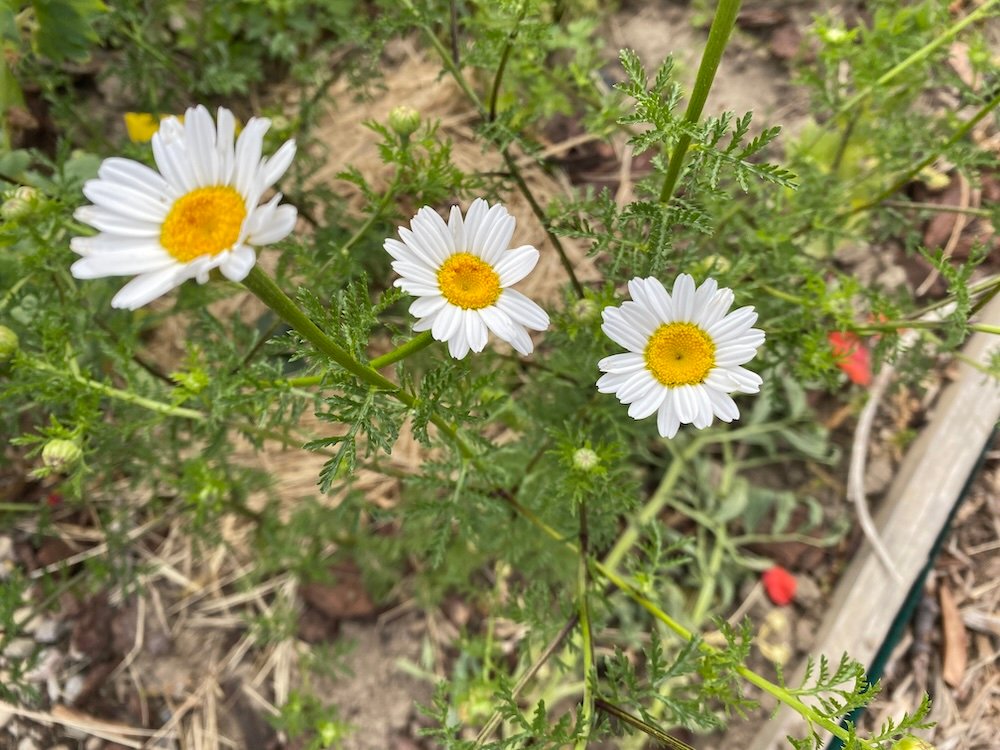
I’m not sure what it is – a sort of Anthemis or Anacyclus clavatus. In any case they would be close relatives within the Asteracea family. It is definitely a native wildflower and blooms in May. Because it’s inoffensive, non-invasive and looks pretty with its daisy-like flowers I’m letting it stay.
Bryonia
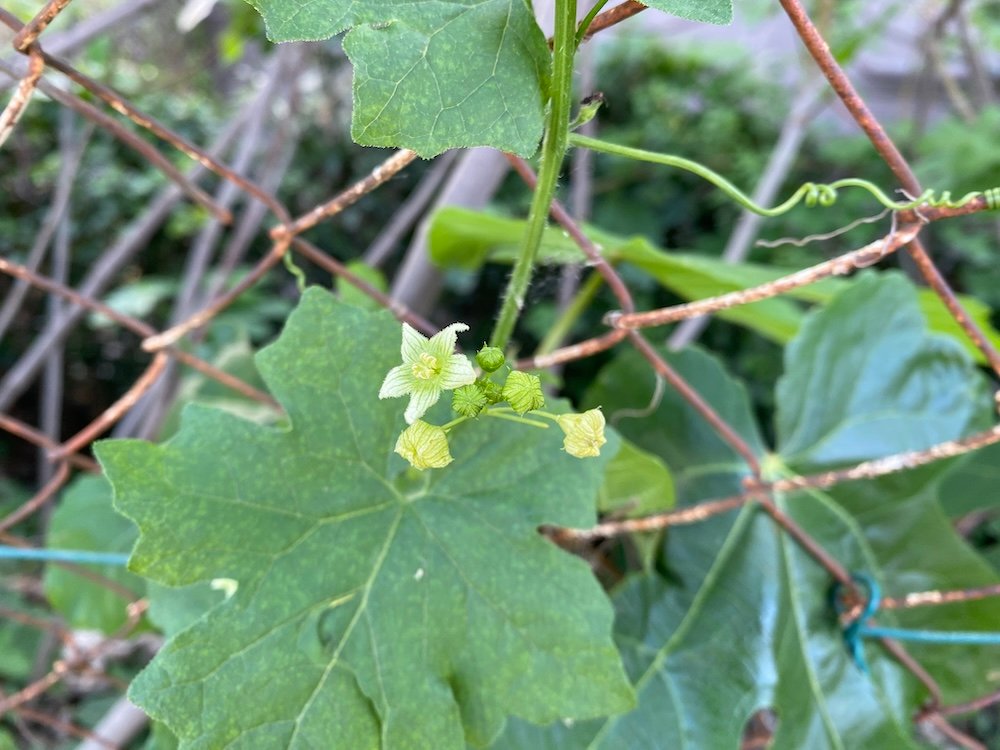
Pretty name, bad plant. Bryonia looks pretty but is very toxic when ingested, especially its berries, but also every other part of it, roots, leaves, flowers, tendrils, or vines. It has one redeeming quality in being the only food plant for the strictly specialized sand bee (Andrena florea).
Borago officinalis
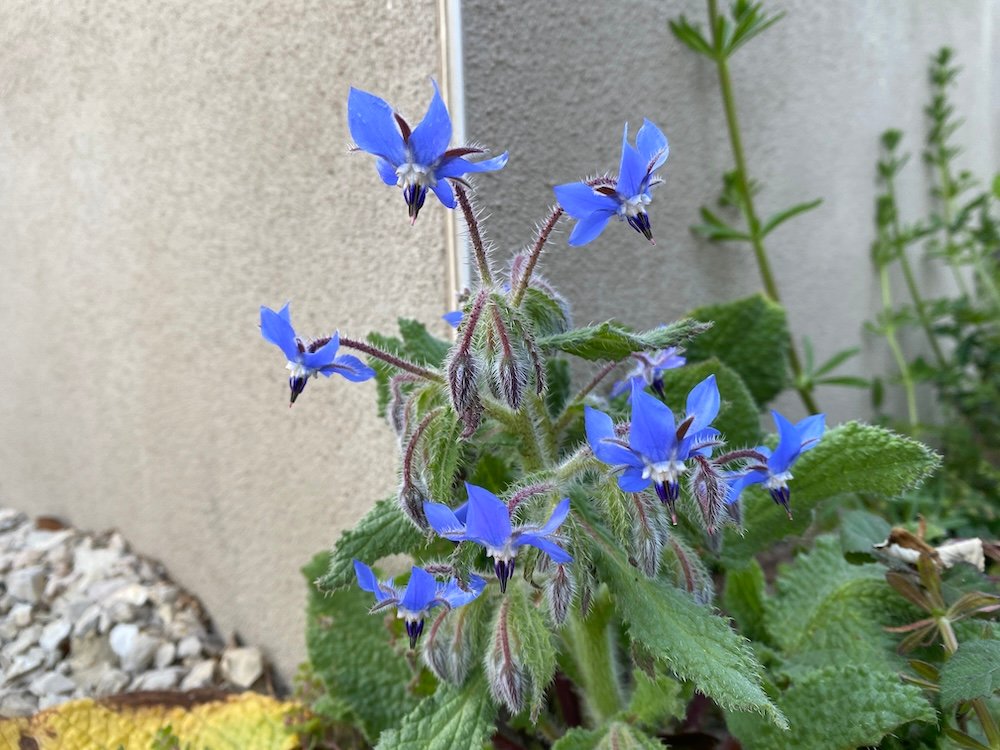
Native to the mediterranean, grows wild in many places. I actually don’t really like this plant because of its prickly leaves, but I love to put the little blue flowers in salads. And the bees are just crazy about it when it appears in spring.
Easy to control in the garden.
Calendula arvensis
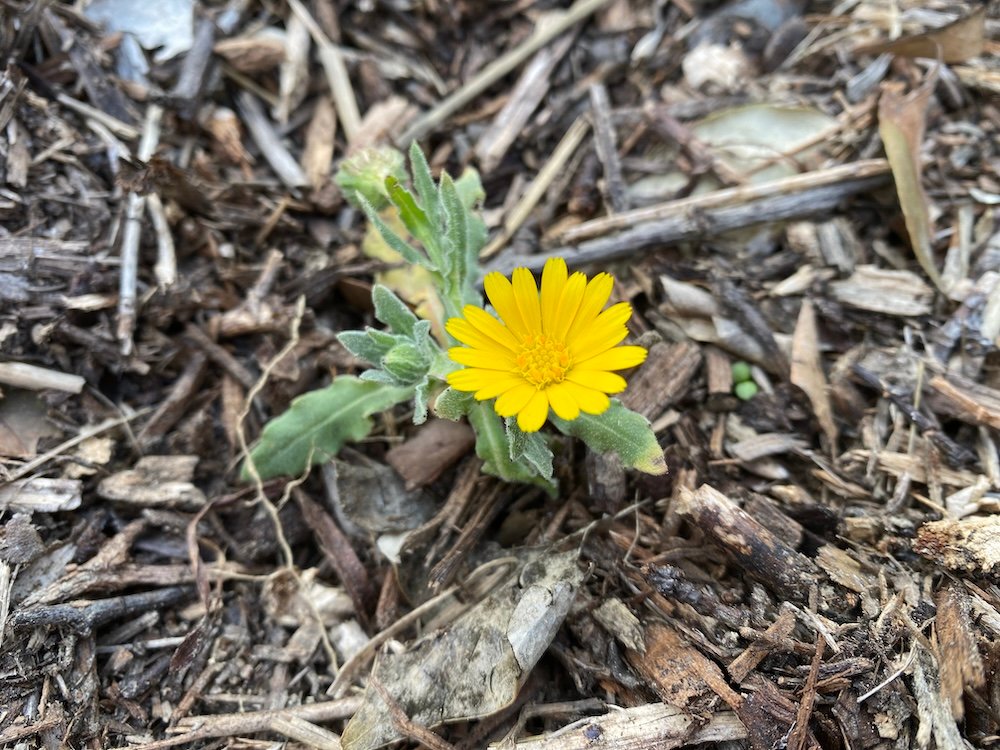
A Mediterranean native (although it is now found in many regions of the world) and probably the origin of calendula officinalis. Grows all over the countryside in vineyards, fields, and meadows and blooms in spring
Cerinthe major
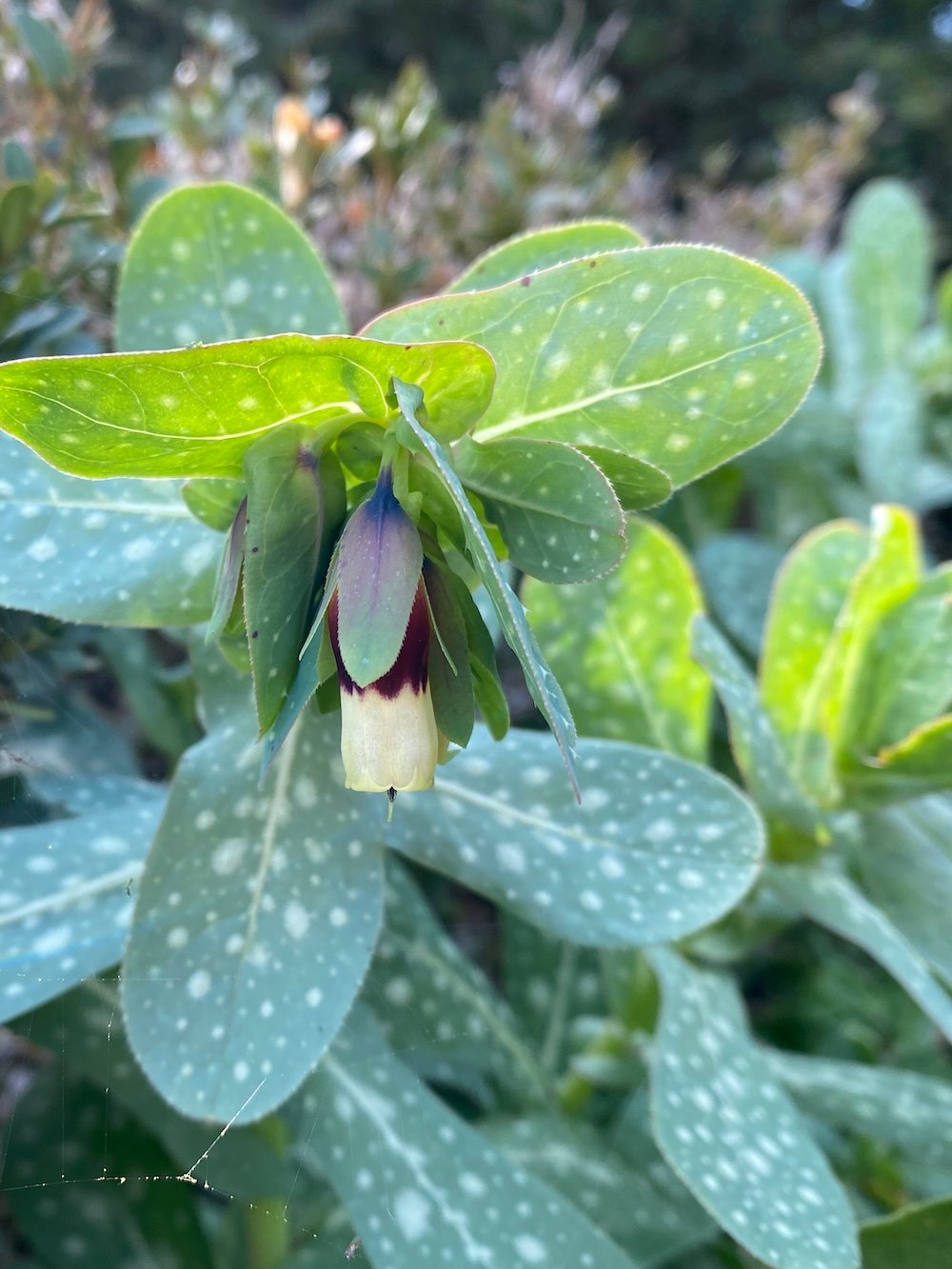
Also native to the mediterranean. I have not seen it in the wild but it grows profusively in my garden from December through April. The speckled blue-green leaves are pretty, the little yellow-brown flowers not showy but incredibly popular with bees in the late winter and early spring. From April on it starts to look less pretty and as other things come into season I pull out the waxflowers.
Easy to control in the garden.
Chenopodium album
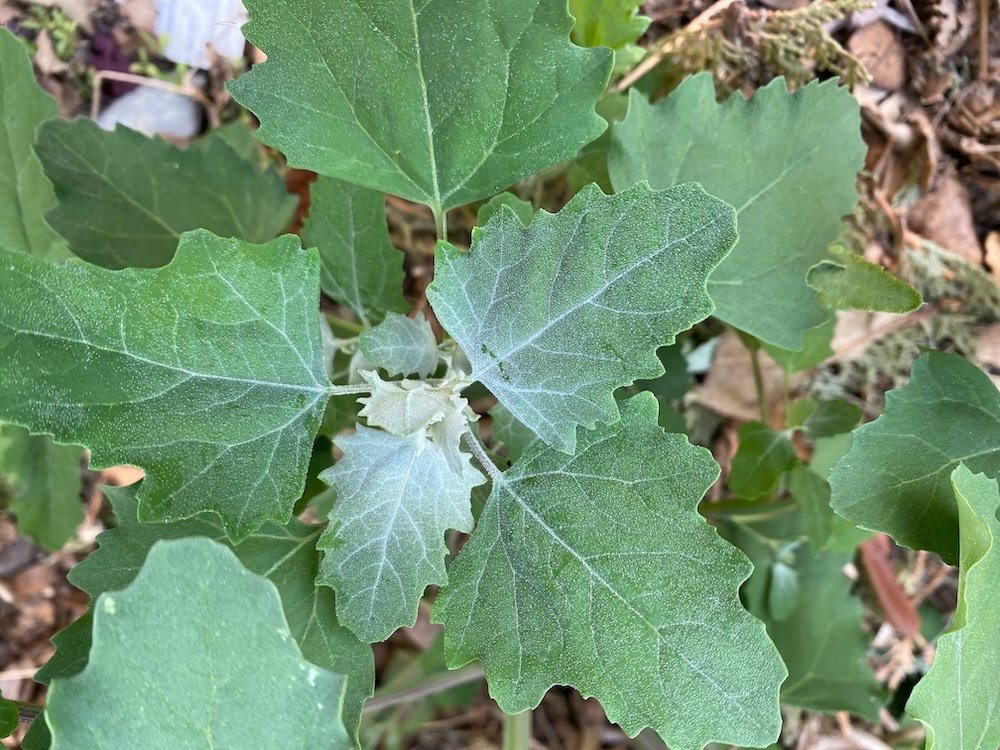
My first sighting of chenopodum album in the garden was a happy one. After all this ancient wild plant is quite edible, full of nutrients, and even decorative looking. But I’ve seen how quickly it grows to gigantic proportions, how prolifically it reseeds (even if you think you’ve cut it in time) and how hard it is to get rid of. So now I’m pulling it out wherever I see it crop up.
Daucus carota
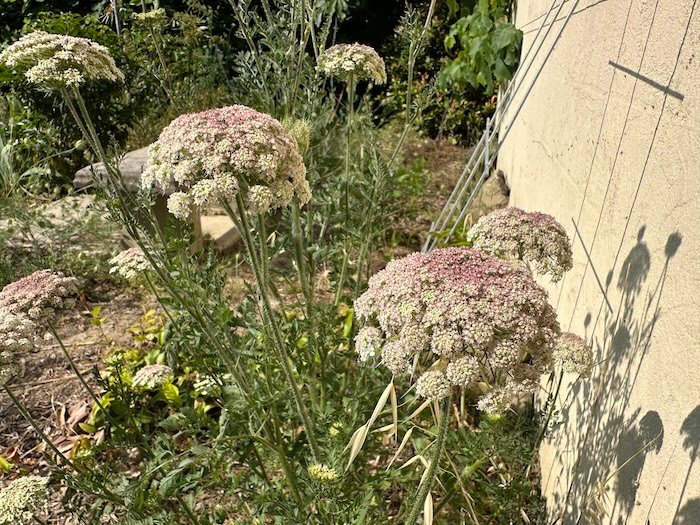
It grows wild in white and it’s so pretty I decided to try out seeds for a variety called “Purple Kisses”. The purple kisses turned out to be unspectaculary white with a hint of dark rose. In sum: not invasive, not a bother, and mostly pretty to look at in a wild corner of the garden.
Diplotaxis erucoides

I call it “Languedoc snow” because in February there is so much of this Mediterranean native in the fields and vineyards that it looks like snow from afar. Although I’ve gathered sprinkled lots of seeds gathered on my walks for the past two years I had at most three plants in the spring of 2025. So not terribly invasive – but edible.
Datura stramonium

A very pretty little weed that has spread all over the world. Since it is also very poisonous it was removed after the photo was taken.
Fumaria officinalis
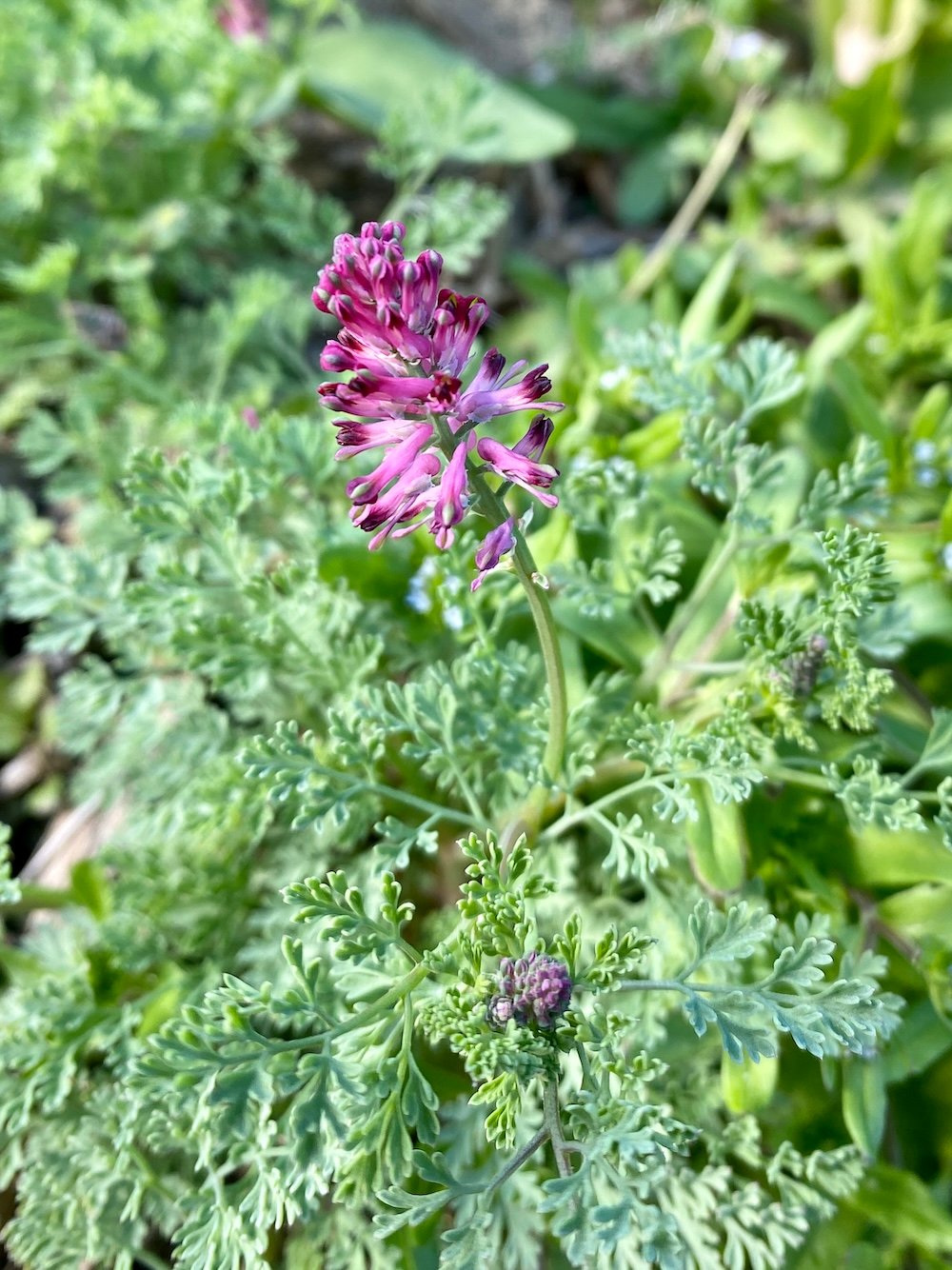
A native to Europe that I had never seen before. Here in my garden it grows profusely and I like it for its delicate appearance. I leave it as ground cover in spring and then pull it up as other plants need the space. It is somewhat poisonous and used as an herbal remedy in some countries.
Easy to control in the garden.
Fumaria capreolata

Very similar to F. officinalis but the flowers are white with dark red tips and the leaves flatter. A native to the Mediterranean and Western Europe and much less common than F. officinalis.
Easy to control in the garden.
Erodium malacoides

A low-growing Mediterranean native, flowering in late winter and early spring. Relatively easy to control in the garden.
Erodium trifolium

I should probably not include this one under “Wildflowers & Weeds” since one can actually buy it in garden centers. But what the heck – it is a Mediterranean or North African native and exceedingly pretty to look at when it flowers.
Geranium
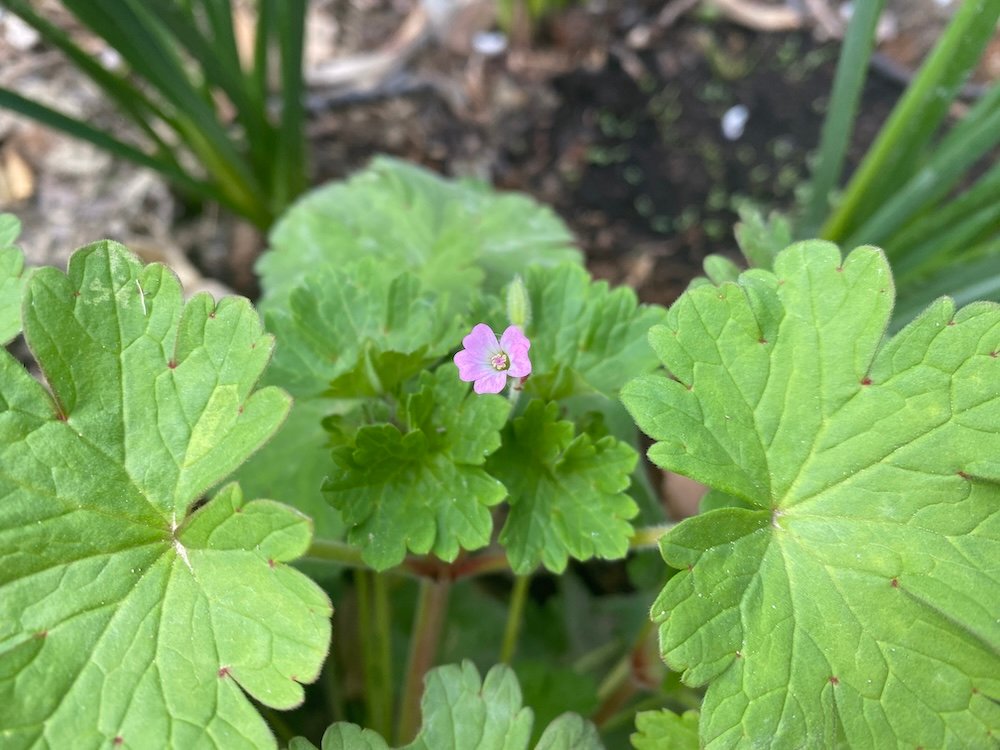
I am not quite sure what type of geranium this is. Along with its brethren Erodium malacoides etc. it sprawles all over the garden and covers empty areas very quickly in early spring. It has a deep root but tends not to come back during the summer, when I pull it out in later spring as other plants need the space. Generally easy to control in the garden.
Iris
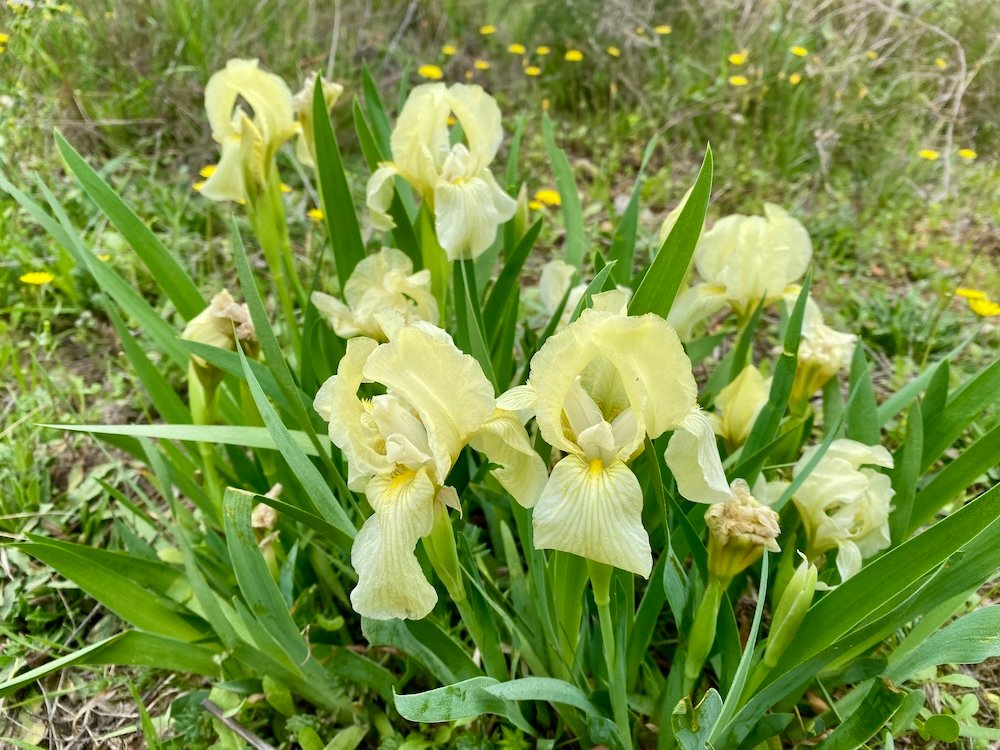
Iris are some of the most hardy, robust, drought and heat resistant flowers there are. On the floor of the small woods of the Garrigue Iris lutescens are flowering in February and in the countryside one finds naturalized Iris barbata.
Lamium amplexicaule

A widely distributed weed, native to most of Europe, Asia and North Africa, and distributed all over the world since. It’s pretty, easy to control, one of the first bee-food flowers in spring, and even edible, raw or cooked, with a slightly sweet and peppery flavour.
Lunaria annua

A native to Southern Europe, this plant is also widely used in gardens. This one must be an escapee from somewhere since it seeded itself on an overgrown sunny slope among rocks. In any case it’s very pretty and I love its yearly reappearance in March.
Plantago lanceolata
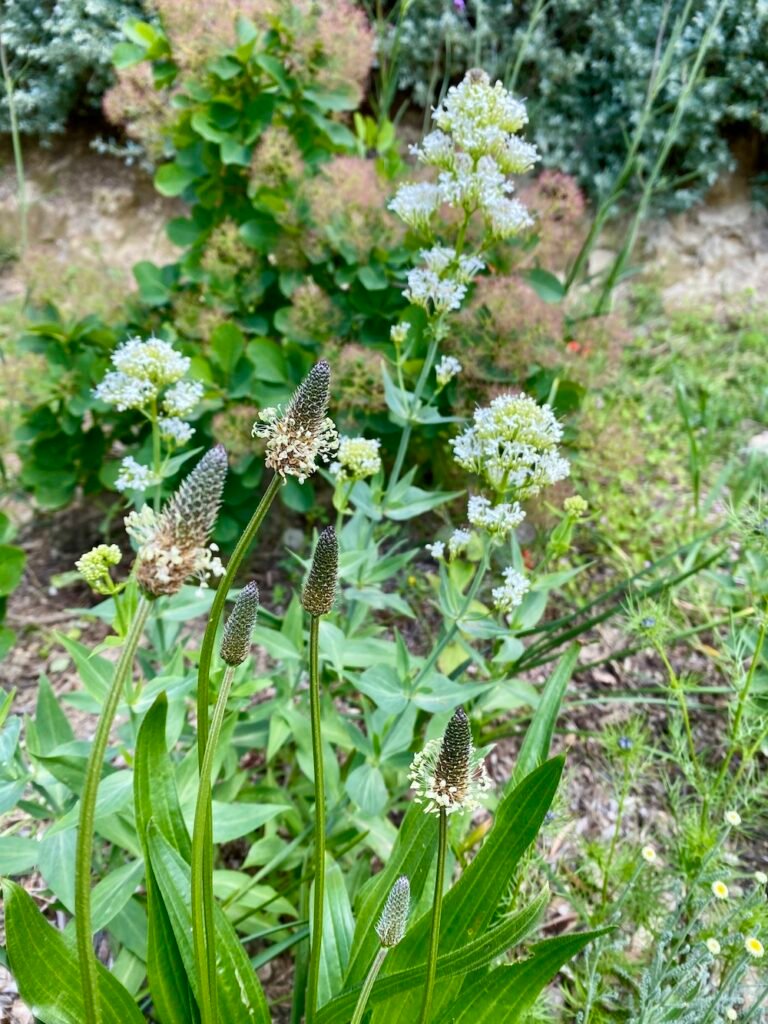
I’ve never before seen plantago plants this big – it must really like this climate and this poor soil. Because it is a healing plant and because it looks quite beautiful in its own way I let it grow and just try to keep it from reseeding. It dies off in the summer heat anyway and can be easily dug up and discarded in the fall.
Silene latifolia
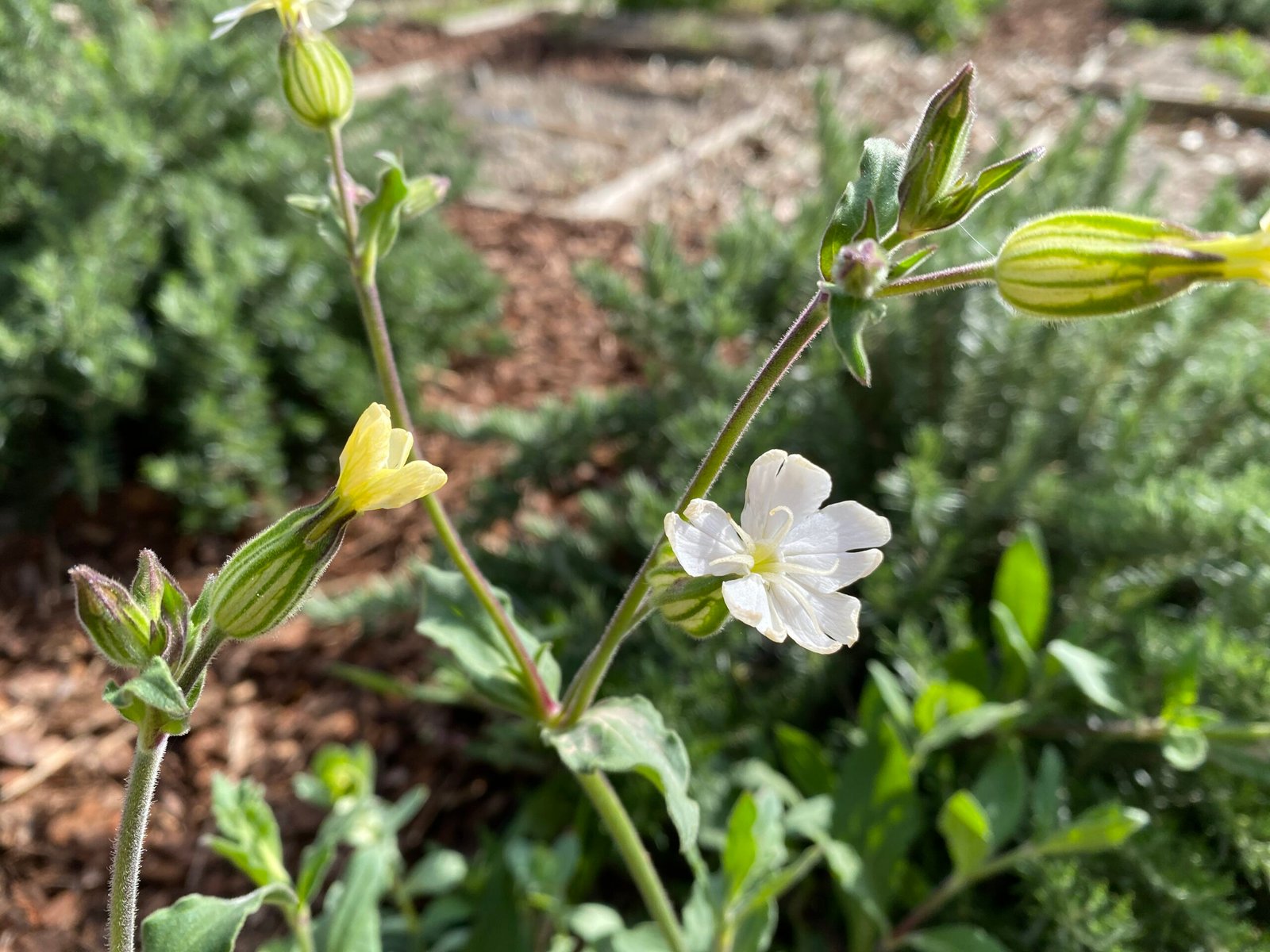
A native of Europa and North Africa, it spraws all over my fruit garden. In the North of Europe the flowers open in the late afternoon to attract insects. Here in the Mediterranean they open in the morning and close in the late afternoon.
It begins innocuous but develops into unwieldy low bushes with deep roots and will only yield to a spade.
Malva sylvestris
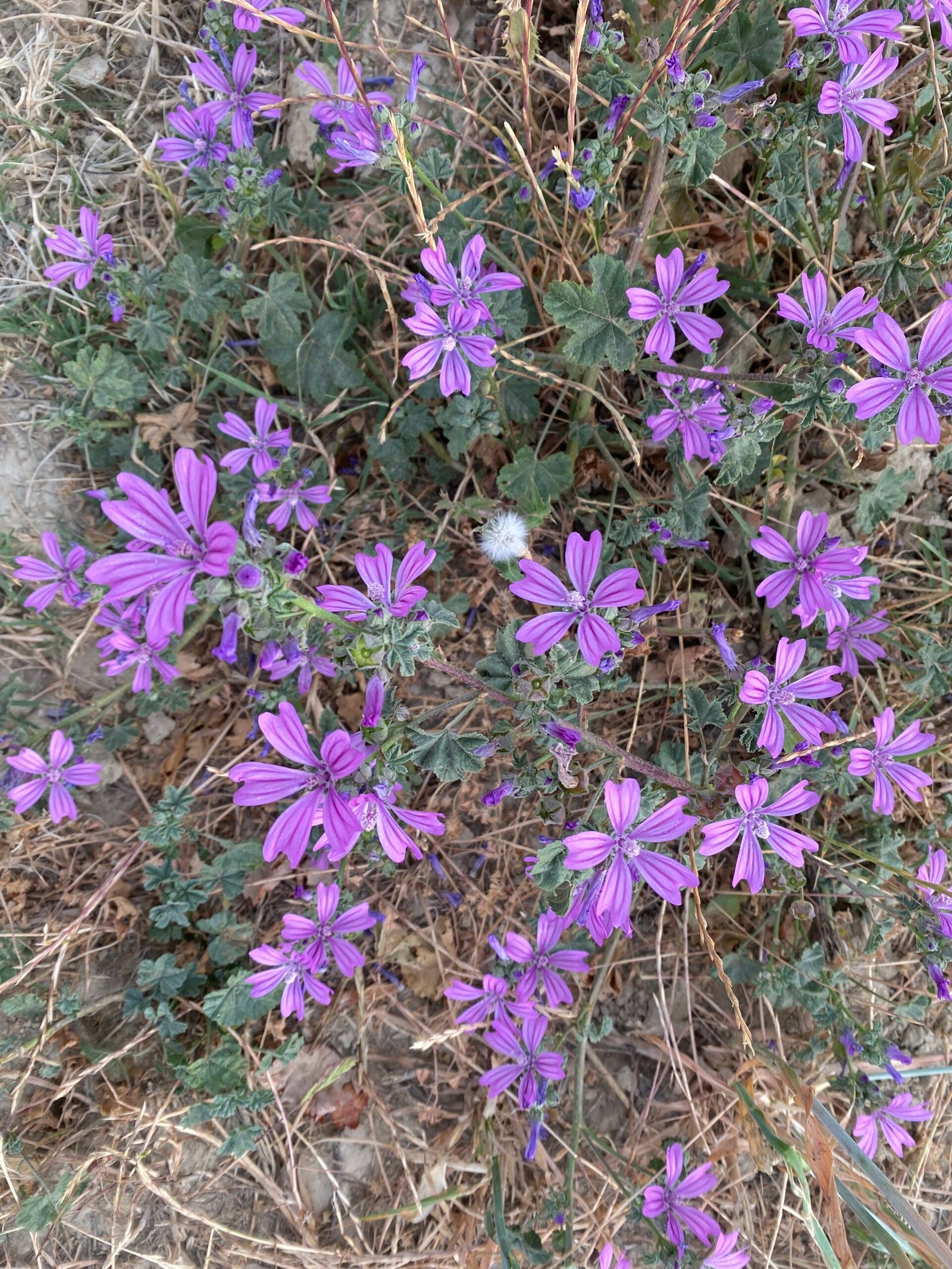
Do not be tempted by these lovely little flowers seen all over the countryside in summer.
In the wild they grow into to middling sized, slim and straight perennials or pretty groundcovers that survive the worst heat and drought.
But in the somewhat richer soil of my garden they develop at record speed into awkward monsters, pushing out long side branches and growing over everything else. And pushing a taproot from hell deep into the ground – needing a pickaxe and a spade to remove…
Solanum nigrum

A delivery of nice garden soil from another garden brought lots of wonderful Iris but what seems like thousands of pesky nightshade plants that need to be pulled out, year after year, before finally, hopefully, diminishing and disappearing.
Urospermum dalechampii
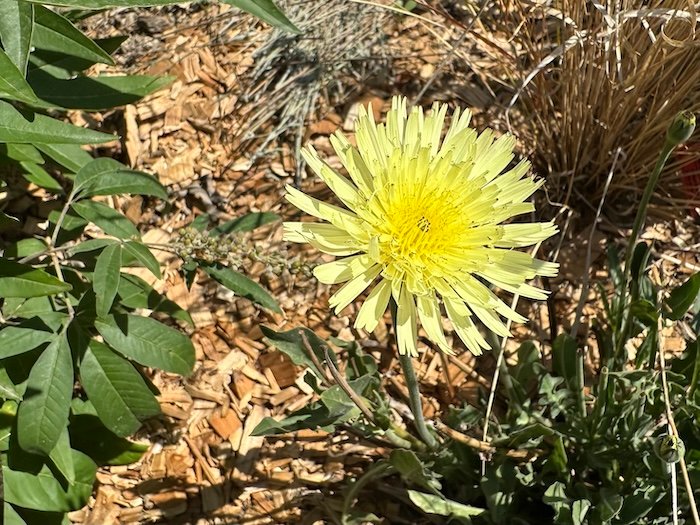
In April the roadsides are filled with lovely lemony yellow “dandelion” flowers. They are in fact the flowers of Urospermum dalechampii, a Mediterranean native. Flowers will reappear throughout the year but never as abundantly as in the spring. In the garden it easy to keep in check.
Veronica persica

One of those ubiquitous wildflowers that have spread from their original habitat (Caucasus/Iran) to show up in gardens practically all over the world. I love those tiny porcelain-like blue flowers early in the spring. Easily controlled in the garden.
Leave a Reply